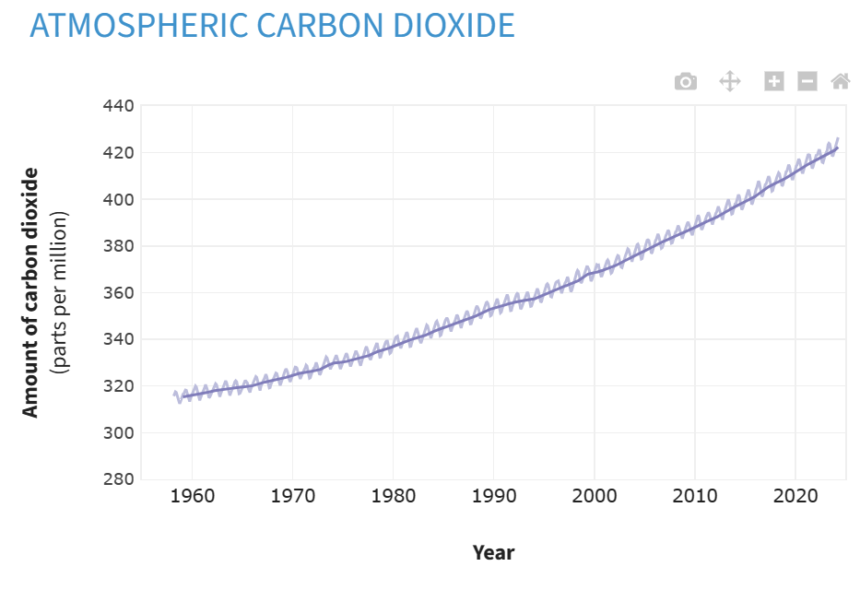
As the realities of global warning continue coming into view, Dominion is adjusting to deal with the challenges. There are things we can do, too.
by Bruce Saller
CONSUMER WRITER
Carbon Dioxide levels in the atmosphere set another record in 2023, registering 419.3 parts per million.
The last time atmospheric carbon dioxide amounts were this high was roughly 3 million years ago, when the global surface temperature was 4.5–7.2 degrees warmer, and sea level was at least 16 ft higher — and possibly as much as 82 ft higher — than in 1900.
The earth’s climate changes over millennia due to changes in its orbit, tilt and rotation axis (known as the Milankovitch cycles) but these do not explain the significant temperature changes we are experiencing today.
Electric Power generation is the second largest contributor to greenhouse gas emissions, just behind Transportation. According to Dominion Resources 2023 Integrated Resource Plan, the summer peak demand is expected to almost double in the next 15 years, mainly due to large increases in data centers and electric vehicle charging.
In addition, Dominion needs to retire most of their natural gas turbines, which produce about half of their current power to meet their goal of 100% renewable energy by 2045. Getting the power sector green is critical to reducing the Transportation sector’s contribution, since many of their solutions involve electrification.
Dominion is planning on adding four types of green energy to achieve their 100% renewable energy goal: Solar, Wind, Nuclear and Storage.
Solar
There are about 100 watts of energy per square foot of sunlight, and since solar panels are about 20% efficient, they can generate a maximum of 20 watts per square foot. Solar generates about twice as much energy in the summer as in the winter since the sun is stronger and there is more daylight. This makes solar a great solution for the summer peak demand since it produces the most electricity in the afternoon when the peak occurs.
Wind
Wind turbines can be installed onshore or offshore. An onshore turbine can produce up to 6 Mega-Watts (MW) of power; an offshore turbine up to 14 MW. The percentage of energy produced by any electrical generator is its capacity factor – calculated by dividing the power actually generated by the rated power. The capacity factor of onshore wind in the U.S. ranges from 21% to 52%, and averages 35%; offshore capacity factors are higher and expected to reach 60% by 2050.
Dominion Energy’s offshore pilot project so far has a 47% capacity factor. Wind turbines fill the solar winter gap since their output is lowest in summer and highest from November to April.
Nuclear
Dominion is planning on installing a new type of reactor — Small Modular Reactors (SMR) — which can generate up to 300 MW (vs 1000+ MW for conventional nuclear reactors).
SMRs are expected to have a 90% capacity factor. Nuclear reactors normally operate at their full capacity, providing the base load during the day and using any excess power at night to power storage systems.
Storage
There are currently two types of energy storage deployed in Virginia: Pumped-storage and Batteries. Pumped-storage uses two lakes at different elevations. Water is pumped to the higher lake at night, then flows to the lower lake running a generator during the day. Pumped storage is a very efficient storage system but requires a large amount of land.
Battery storage is more compact and can be more easily distributed. Storage energy is normally used during peak demand and is replenished at other times.
No Perfect Solution
None of the green energy solutions are perfect, but all are better than the option of doing nothing and returning to the climate of 3 million years ago. Many southern cities have seen the annual rate of sea level rise increase from .1 inch from 1980-2009 to .5 inch from 2010-2023. The government has already purchased houses on the outer banks to disassemble them before they were washed into the ocean, and will be spending much more combating the results of extreme weather and rising seas in the future.
So what can you do to help the green energy conversion?
- Consider installing solar panels. Solarize Virginia will determine if solar panels will work for you and give you a quote. You may be eligible for a federal tax credit of 30% of the total cost (including installation). You can also receive hundreds of dollars a year selling your Solar Renewable Energy Credits.
- Reduce your files on the cloud/social media. Consider buying an external drive and moving most of your files to it.
- Replace old, inefficient appliances with Energy Star appliances. Local Obituaries
To view local obituaries or to send a note to family and loved ones, please visit our website at the link that follows.

Weather and Traffic

Support Award-winning, Locally Focused Journalism

The FXBG Advance cuts through the talking points to deliver both incisive and informative news about the issues, people, and organizations that daily affect your life. And we do it in a multi-partisan format that has no equal in this region. Over the past month, our reporting was:
$8 a month supports great journalism
- First to report Mary Washington Healthcare’s move to close Kid’s Station Daycare
- First to detail MWHC’s taking actions that undermine the viability of the Moss Free Clinic.
- First to detail and then expose the controversy surrounding the Riverbend High School swim team
- Providing the region’s best political coverage of the upcoming 7th District Congressional race.
For just $8 a month, you can help support top-flight journalism that puts people over policies.
Your contributions 100% support our journalists.
Help us as we continue to grow!





